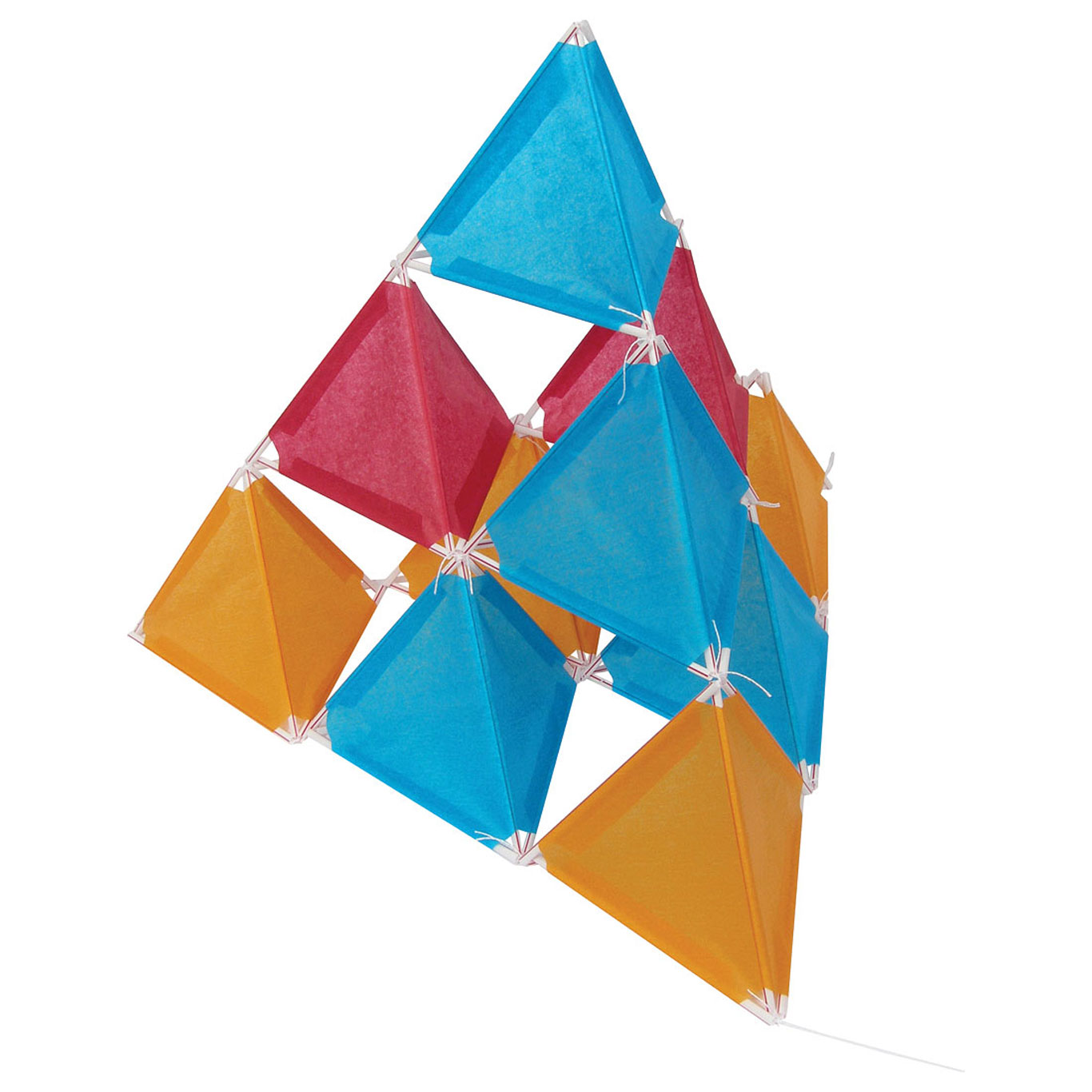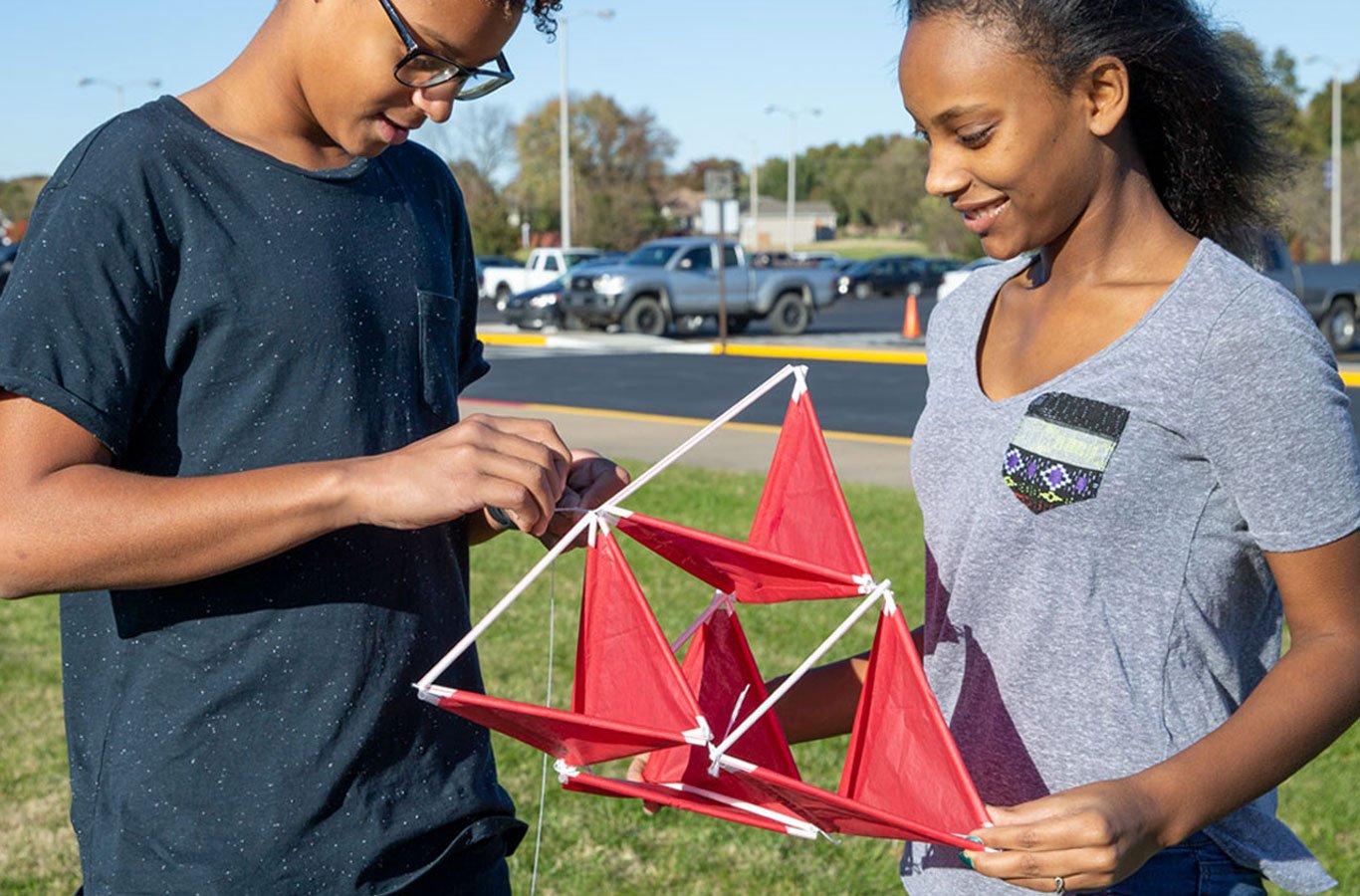Updated 5/7/24
Let’s go fly a kite up to the highest height. Let’s go fly a kite and send it soaring!
I’d be willing to bet you started singing that. The people in the movie Mary Poppins knew how to have a good time when they were all flying kites at the end of the movie. The windiest time in the US is March to April, but any time the wind picks up is a perfect time to do some kite-related activities outside!
A kite normally consists of a very light frame with thin material that flies in the wind using an attached string. Even though it might not seem like it, the four forces of flight that would normally affect an airplane also affect a kite.
- Lift is the upward force that pushes a kite into the air. The surface area of the kite affects the lift. The differences in air pressure around a kite generate lift. When air moving over the top moves faster than air moving under the bottom, lift happens.
- Weight is the downward force generated by gravity acting on the kite. Simply, the gravitational force of weight pulls the kite toward the earth.
- Thrust is the forward force that puts a kite in motion. While an airplane relies on engines, the kite relies on the tension from the string and moving air. Windier days mean the kite flier doesn’t need to move as much for the kite to stay in flight.
- Drag is the force acting opposite to the direction of motion. Drag occurs when there is a difference of air pressure between the front and back of a kite. It’s a type of friction that happens as air moves over the kite’s surface.

A fun activity to do with kites is to test the force of lift for different kites. Have students build kites of different sizes. You could have an everyday kite, a KaZoon Kite, and a 10-cell KaZoon Kite. After students build each kite, attach a spring scale to the kite string while it flies. Hold the spring scale to determine the lift of the kite while it’s in flight and record the results. Determine what caused the variation in the recorded data.
Watch our legacy series video about how to build the tetrahedron KaZoon Kite with Dr. Zoon. It’s an oldie, but a goodie, and still very relevant.
Another good experiment that you can do with varied kites is to have students test the full performance of their kites by recording time in air and length of string. Place students in pairs and have them fly their kites. While one student flies the kite, the other records the data. Record how long the kite remains in the air, and when it returns to the ground, measure the amount of string used during the time the kite was flying. Have students record observations and do a redesign to see if their distance and time in the air can be improved!

So, check out the extended forecast for windy weather and prepare for a kite flying extravaganza with your class. We offer multiple products and activity guides, such as the KaZoon Kites Teacher’s Guide, that we created for this exact purpose of combining learning with the fun of kites.
Get some string, make a kite, head outside, and whistle some Mary Poppins while the wind sends all the kites soaring! And don’t forget to comment with any tips or tricks you’d like to share, helping others to make the most of their lessons.
MORE RESOURCES:

